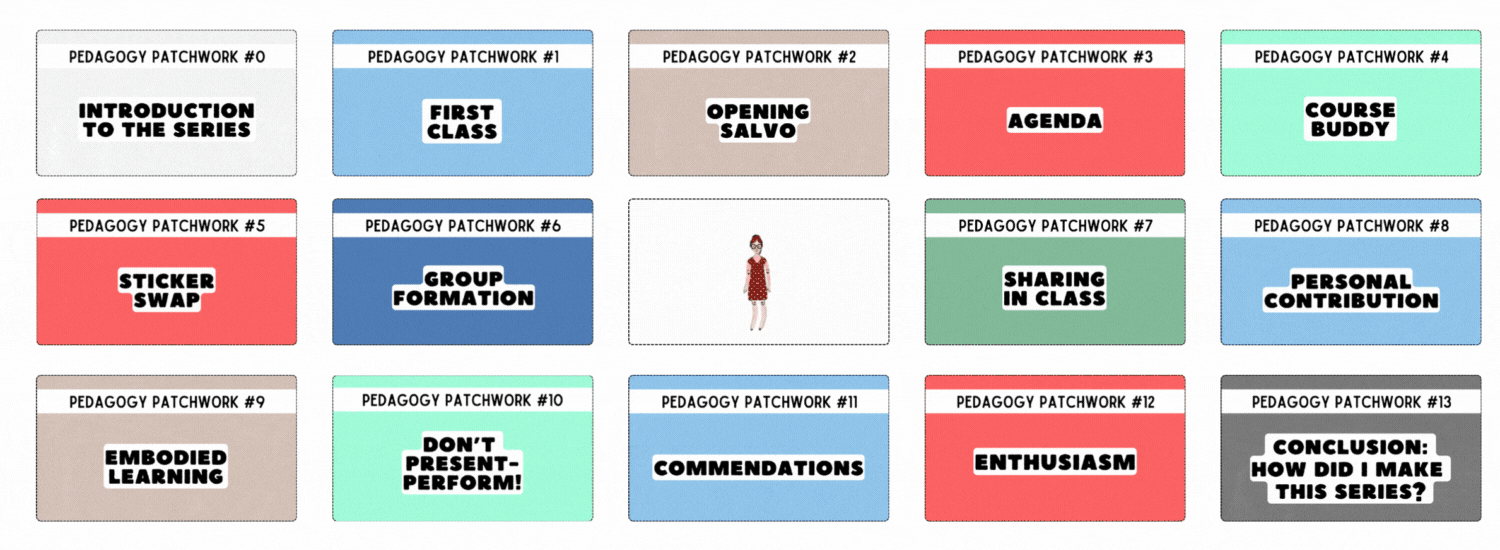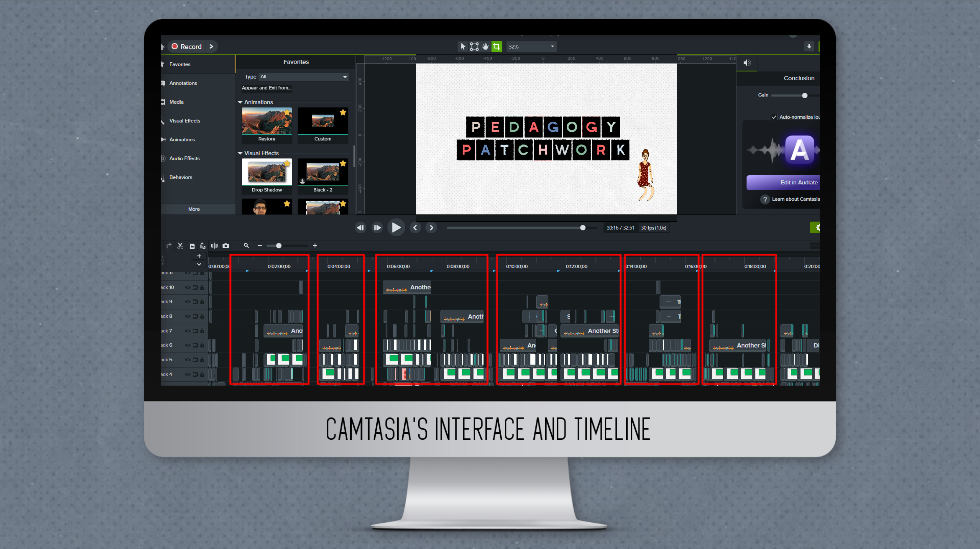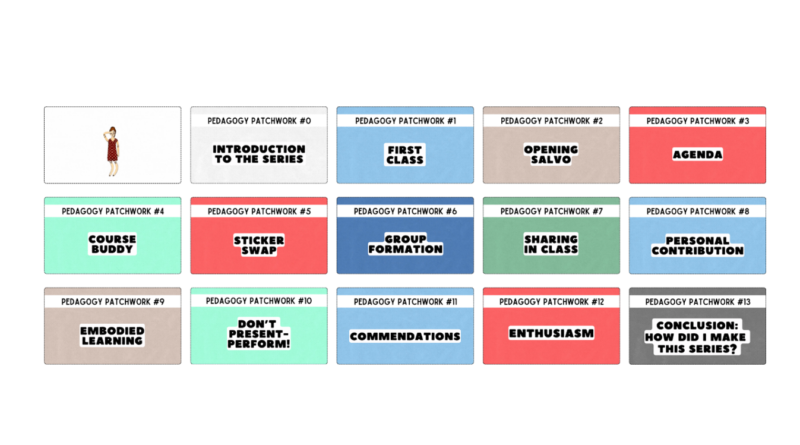Check Out Pedagogy Patchwork
Check Out Pedagogy Patchwork
A NEW Video Series for Educators at INFIDEOS
Jenna Hartel

Pedagogy Patchwork, a new 14-episode video series, has just been published at my YouTube channel, INFIDEOS. It contains a collection of creative strategies for educators in Library and Information Science. (Actually, these notions would enrich any higher education classroom and discipline and can be shared widely.) Please go ahead and visit the complete playlist or the 90-second Introduction, right now.
All the teaching ideas are practical and require just a little planning in advance. Every suggestion has been tested and refined in my own classroom at the Faculty of Information, University of Toronto, over the past decade in a Master of Information program. For easy uptake, each episode is only 2-minutes in length. Numerous examples, scripts, and templates are provided for instructors to customize and use. Across the videos you will hear the voices of my students, too, as generated through artificial intelligence. Early viewers have commented that my students say apt and funny things about Bates and Buckland, among others—that’s true!

The dozen techniques featured in the series are inspired by two philosophies, which are noted here as background but are not a focus within the videos. Contemplative pedagogy, an holistic educational approach based upon contemplative practices, leads to many ideas that are heart-warming and student-nourishing. Multimodal pedagogy, which honors diverse ways of learning and communicating, brings movement, materiality, and performance into the classroom.
—Episode #7: Sharing in Class, provides helpful, straight-forward guidance to students in voicing their thoughts and feelings, thereby making class discussion more honest, participatory, and interesting.—
For example, Episode #4: Course Buddy, proposes that students are randomly matched with a peer and supported in forming a friendship. Episode #7: Sharing in Class, provides helpful, straight-forward guidance to students in voicing their thoughts and feelings, thereby making class discussion more honest, participatory, and interesting. Episode #10: Don’t Present—Perform! turns conventional social scientific presentations (often delivered by students at the conclusion of a project or semester) into more artful and exciting edutainment. All the titles are self-explanatory as apparent in the thumbnails, above.
By design, each of the episodes adheres to the same four-part conceptual structure. First, a common classroom problem or situation is described, which will likely strike a familiar chord or pain point. Second, a novel idea or solution is proposed, to capture the imagination. Third, instructions and examples are delineated and illustrated to a degree that can be replicated. Fourth and finally, the benefits and outcomes are described, to alleviate any doubts. Clear visual cues within each video mark the progression through this logical sequence, thereby increasing comprehension by viewers as they advance from one episode to the next.
Anyone interested in the creative process, and video-making in particular, will especially enjoy Episode #13: Conclusion – How Did I Make This Series? It is more technical and instructional, describing how the episode topics were brainstormed and organized into themes; their translation into a multimedia format; and the various tools, technologies and platforms employed along the way. Attention is given to the production of my avatar, a spry and springy puppet by Grace Jordan Owens. She comes magically to life through the generative artificial intelligence, Animated Drawings. The student voices I mentioned earlier are created in Speechify Studio and are refreshingly diverse. Screen grabs, shown below, are shown of the series being made within design platform Camtasia, and specific digital assets (the various image and audio content) are identified. This revealing conclusion is meant to train and inspire other video-makers.

To conclude, I wish to recognize my colleagues at the Faculty of Information, Drs. Tao Wang and Nada Al Masri. They joined me in wide-ranging discussions of teaching over the past two years and encouraged the creation of Pedagogy Patchwork.
Cite this article in APA as: Hartel, J. Check out Pedagogy Patchwork. (2025, April 10). Information Matters, Vol. 5, Issue 4. https://informationmatters.org/2025/04/check-out-pedagogy-patchwork/
Author
-

I am an Associate Professor at the Faculty of Information, University of Toronto. As an interdisciplinary social scientist devoted to the field of Library and Information Science (LIS), I conduct research in three related areas: 1) information and the "higher things in life" that are pleasurable and profound; 2) visual and creative research methods; and 3) the history and theory of LIS. In the Master of Information program at the Faculty of Information, I mostly teach graduate students in the Library and Information Science concentration. Both my research and teaching aim to be an imaginative forms of intervention in the field of LIS, through unorthodox projects such as Metatheoretical Snowman, Welcome to Library and Information Science, and the iSquare Research Program. See my website at jennahartel.info or my YouTube Channel, INFideos.
View all posts





